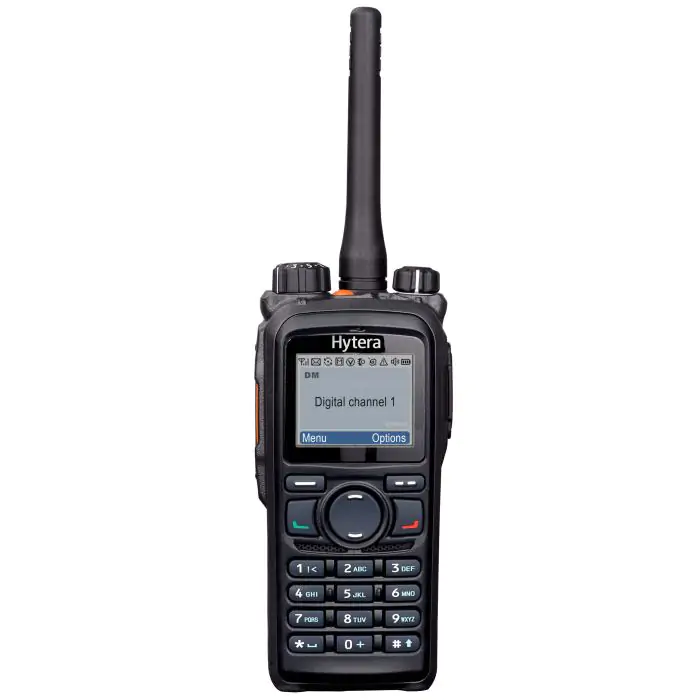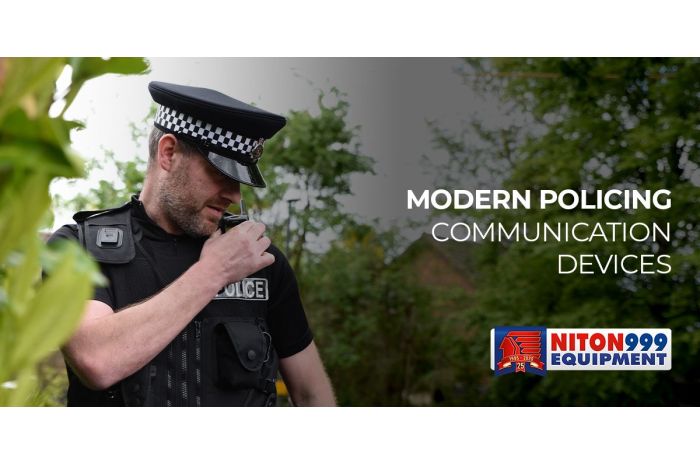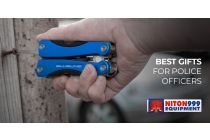Communication is a cornerstone of effective policing, and in the modern era, advanced communication devices play an integral role.
Radios and communication devices have developed rapidly with state-of-the-art features such as multi-channel communication and security.
This guide delves into the evolution and current state of communication devices in policing, focusing on radios, earpieces and other essential accessories.
History of Police Radios
Early Beginnings
The concept of utilising radios for police work dates back to the early 20th century.
In the initial phases of wireless communication, the technology was rudimentary, often unreliable, and reserved for emergency or specialised use.
However, it wasn't until after World War II that these communication systems became more standardised, benefiting from the advancements in radio technology.
Before the widespread usage of radios, police communication largely depended on telephone lines and physical dispatch systems, which were cumbersome and slow.
Advances in Technology
As technology advanced, police radios developed quickly.
Past analogue systems eventually gave way to digital radio systems. Digital systems offer:
- Improved clarity, reducing misunderstandings that could arise from static or poor reception.
- Better range, allowing for more extensive geographical coverage.
- Enhanced features like text messaging and GPS tracking.
Digital Transition
In the UK, the transition to digital radio technology for emergency services was marked by the Airwave service in the early 2000s.
This upgraded communication system was a substantial upgrade over the previous systems, offering secure, encrypted, and extensive coverage across the country.
Airwave became the backbone of public safety communications, not just for the police but also for other emergency services.
Policing with Radios
Real-time Communication
Radios enable immediate two-way communication between officers in the field and their command centres.
This instant connectivity is vital in rapidly evolving situations, allowing for quick dissemination of information, effective coordination, and rapid and reliable decision-making, all of which are crucial.
Multi-Channel Functionality
Modern police radios have multi-channel functionality, allowing for a more organised and specialised communication structure.
For instance, different units could have separate channels like traffic, dog unit, and armed response.
This compartmentalisation organises communication lines, ensuring that only the relevant units are involved in specific conversations, thus reducing "noise.”

Above: The high-performance Hytera PD785
Encryption and Security
One of the most critical advancements in modern police radios is using encryption algorithms that secure the communication lines.
Given the sensitive nature of police work, it is imperative that their communications are secure and cannot be intercepted or monitored by unauthorised entities.
Encryption ensures that the information being shared remains confidential.
Effective Earpieces in UK Policing
Earpieces have become an essential component of police communication systems.
Below, we examine some of the most effective types of earpieces used by the police force.
Covert Earpieces
Covert earpieces are designed with discretion in mind and are often employed in sensitive or undercover operations. The best police earpieces are covert without sacrificing quality.
These earpieces are unobtrusive, fitting snugly within the ear canal or looping over the ear under the officer's hair.
Because they're virtually invisible, they’re among the best police earpieces for situations that require low visibility of police presence, such as undercover investigations and close protection.
Advantages:
- High discretion and low visibility
- Secure fit that lessens the chance of accidental removal
- Easy to wear for extended periods
Disadvantages:
- May not offer the best noise-cancelling features
- May require specific compatibility with certain radio systems
Acoustic Tube Earpieces
Designed for environments with high ambient noise levels, acoustic tube earpieces are often used in crowd control situations, large public events, or places where noise pollution could be a factor.
In terms of acoustic tube earpieces, the best police radio earpiece offer excellent audio quality in a comfortable, low-profile form.
Acoustic tubes channel sound directly into the ear.
These earpieces come with noise-cancelling features that filter out background noise, allowing the wearer to focus on the transmitted communication clearly.
Advantages:
- Effective noise-cancelling capabilities
- Generally compatible with a wide range of police radio systems
- Often come with adjustable fittings for comfort
Disadvantages:
- May be more visible than covert earpieces
- Tubes may become uncomfortable during extended wear
Bluetooth Earpieces
Bluetooth earpieces offer hands-free wireless connectivity. This makes them highly flexible and usable when the officer needs to move around without the hindrance of wires.
Advantages:
- Greater freedom of movement
- Reduced risk of entanglement with wires
- Easy to pair with compatible devices
Disadvantages:
- Battery life limitations
- May suffer from signal loss or interference
- Usually more expensive than wired options
Each of these earpiece types has its advantages and disadvantages, and the choice often comes down to the situation’s specific requirements.
Regardless of the type, officers receive training on how to maximise the capabilities of these earpieces, ensuring that communication remains a strong point in the complexities of modern policing.
Effective Radio Accessories in UK Policing
Radios can be optimised through various accessories that enhance their functionality.
Let's delve into some radio accessories, including speaker microphones, antennas, and battery packs.
Speaker Microphones
Speaker microphones are a common attachment for police radios.
They are typically clipped to the officer's uniform near the collar or shoulder, allowing for easy and quick communication without the need to remove the radio from its holster or belt.
This ensures that the officer's hands remain free to deal with other tasks, be it driving, administering first aid, or managing a situation.
Advantages:
- Enables hands-free communication
- Quick push-to-talk (PTT) functionality for immediate response
- Often rugged and built for durability
Disadvantages:
- May pick up background noise if not positioned correctly
- Wires may get entangled if not managed properly
Antennas
The antenna is a crucial component of any radio system. Standard antennas with basic radio units are generally suitable for everyday use but may lack the range and clarity required for specialised tasks.
High-gain antennas are accessories that can significantly improve a radio's range and reception, making them ideal for use in rural areas or situations where extended coverage is needed.
Advantages:
- Enhanced signal range and clarity
- Improved performance in challenging environments (e.g., indoors, densely wooded areas)
- Some models are flexible and robust, reducing the risk of damage
Disadvantages:
- Longer antennas may be cumbersome or awkward to carry
- May require adjustments or tuning for optimal performance
Battery Packs
Battery life is critical in police work. Spare battery packs, or high-capacity batteries, are a valuable accessory.
These packs can be quickly swapped out when a radio's battery is low.
Advantages:
- Extended operational time
- Quick and easy to swap, even in the field
- Some advanced battery packs come with fast-charging capabilities
Disadvantages:
- Adds extra weight to the officer's gear
- Must be regularly checked and maintained to ensure optimal performance
Summary
Police radios have evolved to become a standard piece of kit. They’re vital for maintaining communication across officers, units and central commands.
Modern radios encompass covert earpieces, acoustic tubes and Bluetooth models, all of which offer enhanced performance and flexibility
Niton999 offers police radios and accessories, including high-performance, ultra-reliable radios and various accessories.
Shop our radio gear and accessories here.
FAQs
Can the public access police radio channels in the UK?
No, modern police radio channels in the UK are encrypted and not accessible to the public. Unauthorised interception of police radio is illegal.
Which radios are preferred by the UK police?
The UK police generally use radios that are part of the national Airwave network, which provides secure and reliable communication.
When we consider how do police radios work, we must be aware of the impact the Airwave network had on the UK’s critical infrastructure.
The specific models can vary between departments but must meet certain security and functionality criteria.






